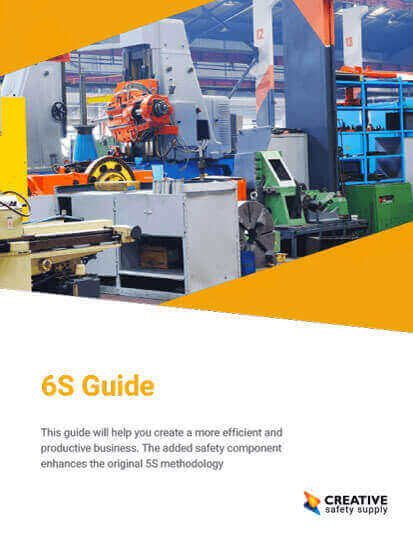
In today's fast-paced and competitive business environment, efficiency and organization are paramount. This is where 6S methodology steps in as a powerful tool for optimizing workspaces and processes. In this article, we'll delve into what 6S is, how it functions, and provide real-world examples of its impact, ultimately showcasing why it's a vital framework for workplace success.
Understanding 6S
At its core, 6S is an advanced form of 5S methodology, renowned for its effectiveness in workplace organization and efficiency improvement. It encompasses six key elements: Sort, Set in Order, Shine, Standardize, Sustain, and Safety. Let's break down these components:
- Sort (Seiri): This involves systematically identifying and removing unnecessary items from the workspace. It ensures that only essential tools and materials are present, reducing clutter and streamlining workflows.
- Set in Order (Seiton): This step focuses on arranging tools, equipment, and materials in a logical, organized manner. Each item has a designated place, making it easily accessible and minimizing search time.
- Shine (Seiso): Regular cleaning and maintenance are crucial in 6S. A clean and well-maintained workspace not only improves aesthetics but also promotes safety and prevents equipment deterioration.
- Standardize (Seiketsu): Standardization involves establishing clear guidelines and procedures for maintaining the organized state achieved through Sort, Set in Order, and Shine. This ensures consistency and sustainability.
- Sustain (Shitsuke): Sustaining the improvements achieved through 6S requires ongoing commitment and discipline. It involves continuous monitoring, training, and reinforcing the 6S principles among employees.
- Safety: While not a part of the original 5S, safety is a critical addition in 6S. It emphasizes the importance of creating a safe work environment and is integrated into each step of the process.
How Does 6S Work in Practice?
Imagine a manufacturing floor operating under 6S methodology. Each work area is meticulously organized, with tools and materials sorted and arranged for easy access. Floors are clean, and safety signage is prominent. Standardized procedures ensure that every worker follows the same efficient workflow. Regular audits and training sessions reinforce these practices, creating a culture of continuous improvement and safety awareness.
Real-World Impact of 6S
- Enhanced Efficiency: By reducing waste, minimizing search times, and optimizing workflows, 6S leads to substantial gains in productivity and output.
- Improved Safety and Morale: A clean, organized workspace fosters a safer work environment. Employees feel a sense of pride and ownership, leading to improved morale and job satisfaction.
- Cost Savings: Through reduced waste, optimized processes, and fewer accidents, organizations implementing 6S experience significant cost savings in the long run.
The Transformative Power of 6S
Implementing 6S is not merely an option for modern workplaces; it's a strategic imperative. By following the principles of Sort, Set in Order, Shine, Standardize, Sustain, and Safety, organizations unlock a new level of efficiency, safety, and productivity. 6S isn't just a methodology; it's a transformational approach to how workspaces operate.
Similar Questions
- What is 6S methodology and how can it revolutionize workplace efficiency?
- How Can 6S Improve Workplace Safety and Reduce Incidents?
- How does employee engagement affect 6S implementation?
- Is 6S Suitable for Non-Manufacturing Environments?
- What Are the Key Steps in Implementing 6S for Lean Manufacturing?
- Why is 6S important?
- What are the Rules of 6S Safety?
- What is the Definition of 6S?
- How can technology improve the effectiveness of 6S in modern workplaces?

